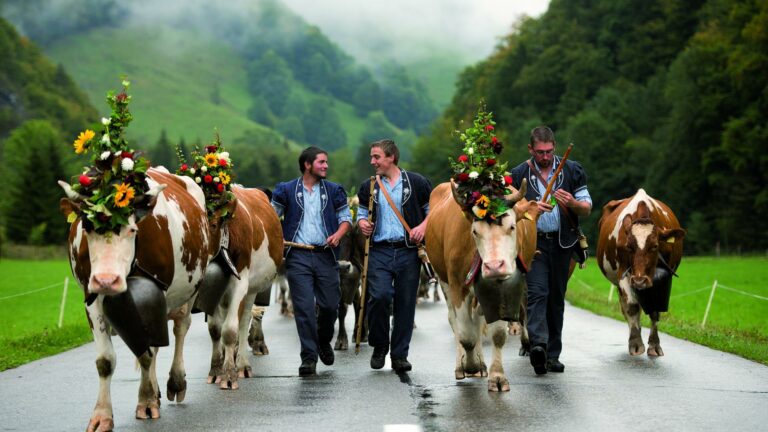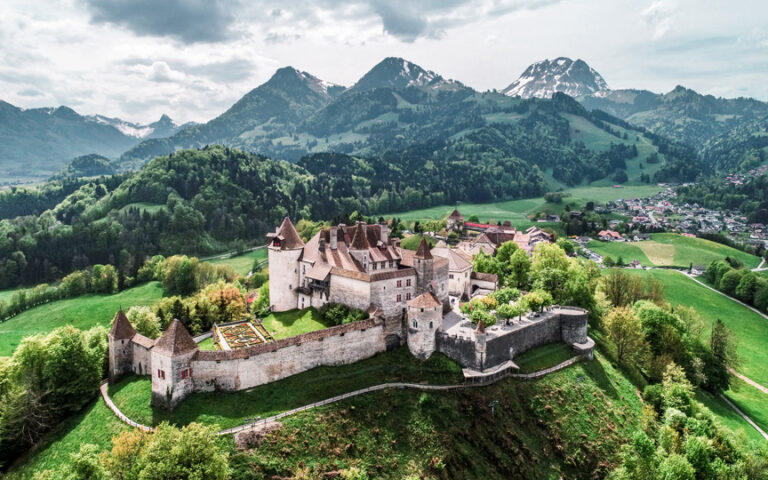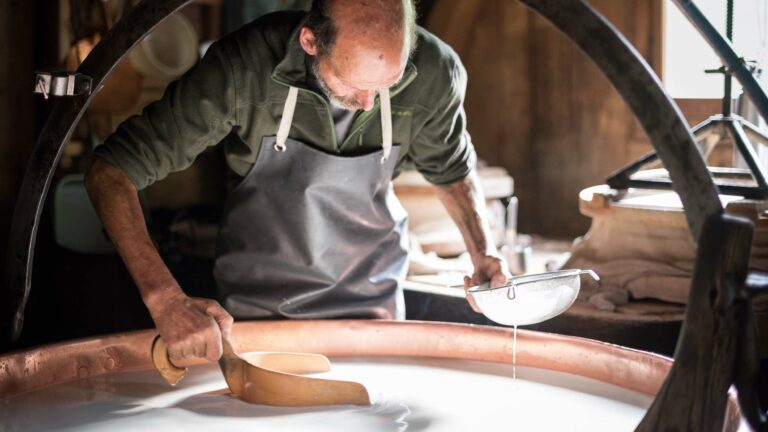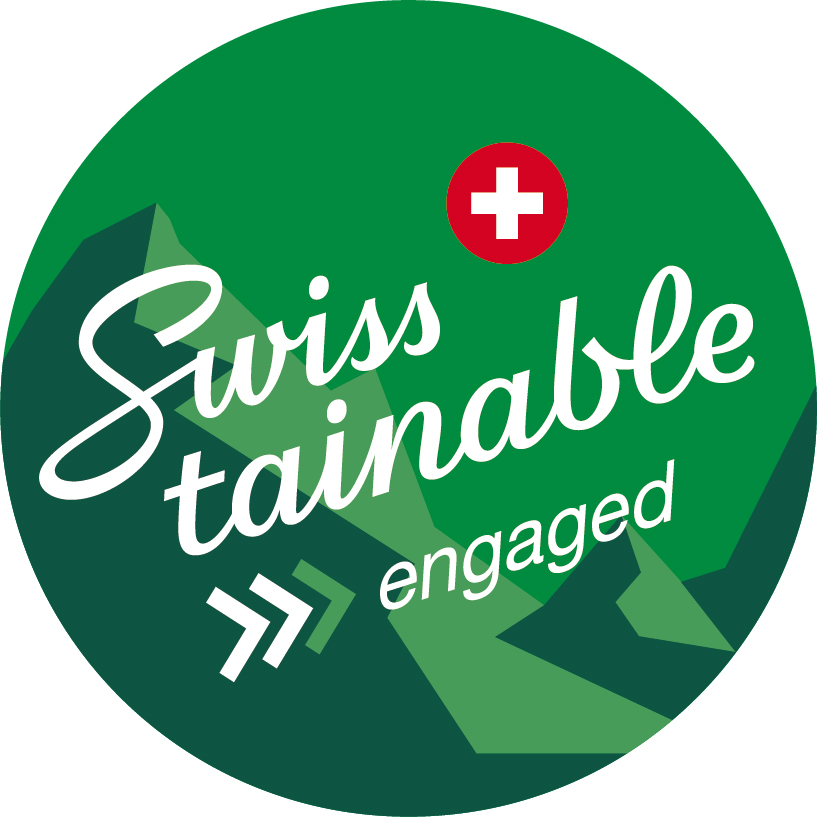The church was rebuilt after the fire of 1805 and consecrated on 22 September 1816. The great organ is the work of the famous Aloys Mooser, of Fribourg.
The oldest known references to the church in Bulle date back to the year 850, however its original construction probably precedes this (6th century). The edifice was rebuilt or converted on a number of occasions, notably in 1750-1751. It was not spared by the fire of 1805: only a few walls remained standing. Renovation work lasted many years. During this period, parishioners attended services in the Church of Notre-Dame de Compassion.
The freestone used to rebuild the bell-tower was prepared locally during the winter of 1806, at Grandvillard quarry. Fifteen lotteries were organised to raise funds for the work. Construction of the tower, begun in September 1808, lasted two years.
Two cannons purchased from the State of Fribourg were melted down to make the six bells of the carillon. They are today the last hand-operated lever carillon in Switzerland, together with the church bells of Salvan (VS). The bell-tower or dome of the church is covered with 8850 sheets of tin-plate.
Considerable sums were invested in reconstruction of the church, which in addition to its religious vocation became a symbol of the town’s resurrection and vitality. The new building was consecrated on 22 September 1816. Its interior is home to the remarkable organ constructed between 1814 and 1816 by the native of Fribourg Aloys Mooser (1770-1839), a famous maker of organs and pianos. The instrument drew admiration from personalities such as Felix Mendelssohn (1822), Franz Liszt and George Sand (1836). It has been listed as a monument of national historical interest since 1973.
The church underwent major reconversion work in the 20th century. During work carried out in 1932, the choir was enlarged; the original neo-classical interior was removed. Further conversions in 1973 and 2007 gave the building its present-day appearance.
Many works of art can be admired inside the building, including in the aisle a Madonna and child by the sculptor Claude Glasson (1679). This statue was originally installed on the old Porte d’Enhaut. In the nave, an Adoration of the Shepherds and a Virgin of the Rosary painted by Joseph Reichlen in 1879 and 1890; in the choir, bronze liturgical furniture by the sculptor Antoine Claraz, with enamels by Liliane Jordan (1973-1974) in front of a monochrome triptych by Vincent Marbacher (2007); stained-glass windows by Emilio Beretta, Bernard Schorderet and Alexandre Cingria (in particular the stained-glass window representing the Martyr of Saint-Pierre); a mosaic of the Way of the Cross and painted decoration of the vault by Emilio Beretta (1931-1932). The bell on the square in front of the church was originally in the church-tower and dates from 1809.
© Musée gruérien and Cultural Heritage Department of the canton of Fribourg
Aloys Mooser
Born 27.6.1770 in Fribourg, died 19.12.1839 in Fribourg. The son of Joseph Anton and Elisabeth Fasel. Husband of Maria Blanchard, later of Rosa Blicklé. A. Mooser trained with his father and in the workshop of the Silbermanns, who were organ makers in Strasbourg. He later trained in Mannheim and Vienna with the piano maker Anton Walter. He returned to Fribourg at the end of 1796. His piano-fortes were highly prized: his clients included Marie-Louise of Austria in 1816 and, post-1834, Prince Nicolai Borisovich Yusupov of St-Petersburg. Construction of the four-manual organ of Saint-Nicolas de Fribourg collegiate church (1834) earned him great renown, as did many literary plaudits. A. Mooser had the ingenious idea of adding an Echo keyboard to the instrument, the stops for which were placed on the narthex. This arrangement was often imitated, particularly by the Callinet brothers in Masevaux (Alsace) shortly after Mooser’s death, and inspired other offset stop mechanisms. The great organs of Fribourg provide an interesting synthesis of German and French organ makers and combine classical and pre-Romantic elements. Smaller instruments, such as the two-manual balustrade organ in Montorge (comm. Fribourg) from 1810, almost fully conserved, testify to the consistency, craftsmanship and sound quality of instruments made by A. Mooser.
© Dictionnaire historique de la Suisse
Find out more
Information panels on the walls and Aloys Mooser’s organ in the main entrance of the church.
Jean Dubas, Notice historique sur l’église paroissiale de Bulle.
François Seydoux, Les orgues de Saint-Pierre-aux-Liens à Bulle, aperçu historique.
Archive photo:
The church pictured from the north, circa 1920.
© Photo Glasson Musée gruérien
La Gruyère Tourisme
Centre commercial Velâdzo (rez inférieur)
Place de la Gare 3
1630 Bulle
+41 (0)26 919 85 00


















